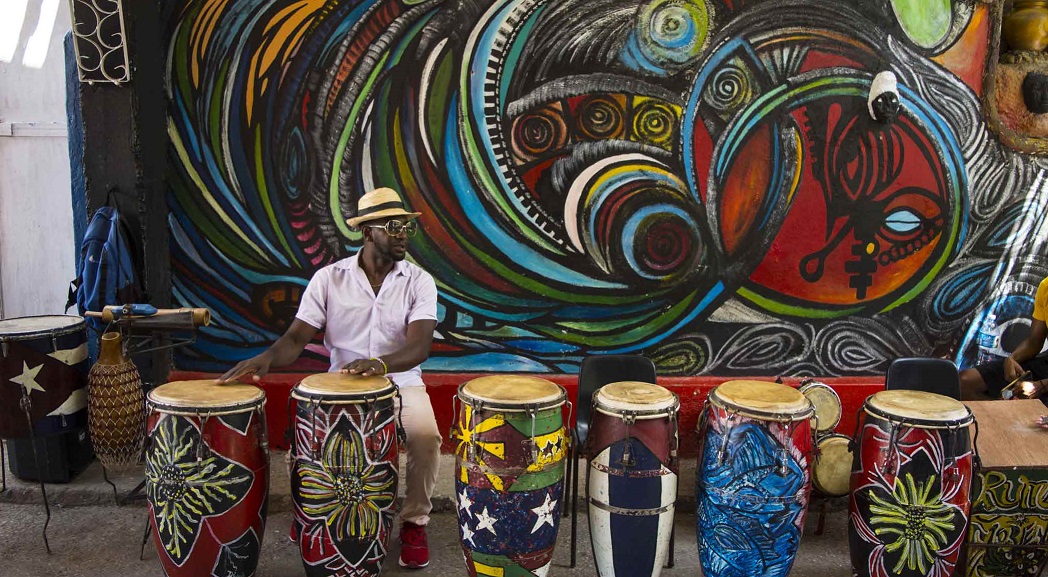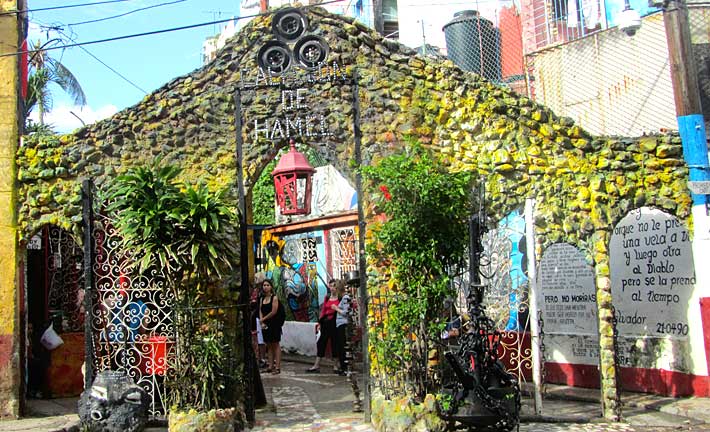
HAMEL ALLEY. CENTRO HABANA
This short street is located between Aramburu and Hospital streets in the popular district of Centro Habana and it is a kind of sanctuary dedicated to Afro-Cuban divinities. It owes its name to Fernando Hamel, an arms dealer at a young age, who settled in this street and built a foundry there and apartments for his workers. But the street was not singled out until a naïve artist, Salvador González, began to paint colorful murals representing African deities. He gave free rein to his imagination and in addition to the murals, created sculptures and all kinds of colored objects, always with the idea of describing the different trends of African religions. It is considered the first outdoor mural on the public highway dedicated to Afro-Cuban culture.
It has also become popular for the performances on Sundays of groups that come to play music or make rumba exhibitions, a unique opportunity to see or dance. It is a place full of color and life.
In the alley, tribute is paid to Afro-Cuban culture; some works are made from the remains of old bicycles or abandoned bathtubs, now gleaming after taking color. In addition, there is a Nganga , a sacred place for the celebration of rites from the Palo Monte religion. The attraction of this alley lies in the colorful murals that adorn all its walls representing like no other the religious and cultural syncretism of the island. The drawings reproduce different gods and orishas , spiritual symbols and animals, with poems or legends written on them, about life, love, dignity, etc. Its main goal is to bring creative art to the people, revitalizing a street forgotten by time and by the city, with an Art Gallery, where the neighborhood itself would be an indissoluble part of a unique creation of its kind, in the country and in the world, always within the reach of children, the elderly, workers and professionals. In this place, in addition, visitors can find products that are associated with Afro-Cuban jobs and rites. This alley is also a space where art and community interact; where festivals are held in which children and residents of the area participate.

Many matinees are organized, which are like small concerts where people sing, dance and drink, generally at noon or late in the afternoon. From the first day of its foundation, shows and performances were held with important groups and prominent figures but it is not until 1993, that systematic activities of all kinds began to be carried out for all ages with the aim of enriching the cultural heritage of the town and making it known to all who visit them.

INFORMATION
EMAIL: info@dancingcuba.com


